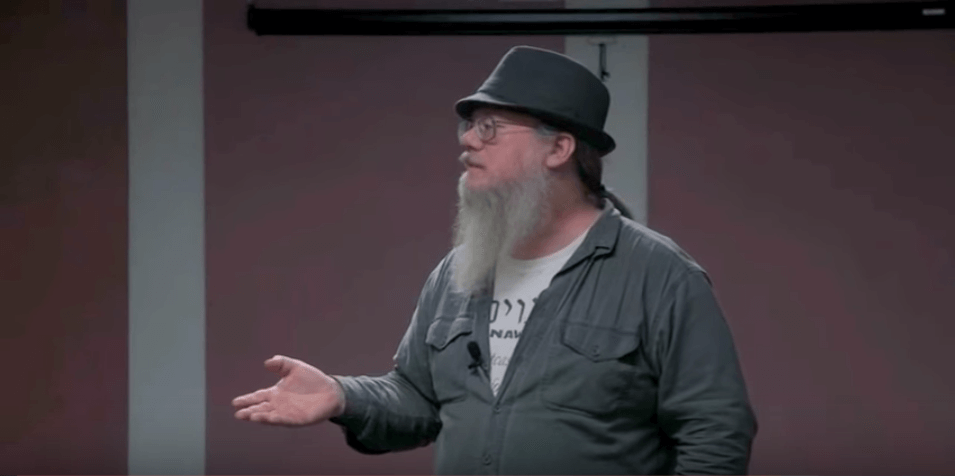-
Homelessness and Drug Addiction
 I posted on Facebook recently that homeless folks were just as worthy as other folks, just in a different situation. I received a rebuttal from another person, having met at least one homeless person. His response could be summarized thus:
I posted on Facebook recently that homeless folks were just as worthy as other folks, just in a different situation. I received a rebuttal from another person, having met at least one homeless person. His response could be summarized thus:All homeless folks use drugs.
Drug users are weak and thieves.
Therefore, these are less worthy than others.Well, I know a number of homeless folks who do not use drugs, not addicted to anything, and I know a number of drug users (also homeless) who are not thieves. But there is a stereotype there that has some truth to it. Allow me to unpack a general trend of the homeless and addiction.
According to the National Coalition for the Homeless, approximately nine percent of people who become homeless do so because of addictions. This doesn’t mean that others aren’t addicts, but it wasn’t their addiction that caused their homelessness. So let’s just say that 15-20 percent of people become homeless with an addiction. What everyone agrees on is that most people aren’t addicts when they become homeless.
The far majority of them. Approximately 70 percent of all people who become homeless every year find housing in less than a year, most of them in a few months. Most of these people certainly didn’t get housing maintaining or increasing their addictions. A few did. But most of them were never addicted to begin with and some gave up or reduced their addictions to meet their goals.
What about the rest? Well, the people who are generally considered “homeless” are those who have been on the street for more than a year. These are the folks who have been without a decent night’s sleep for at least a year. These are the folks forced to move, with everything they own, sometimes more than once a day. These are the folks who tried to get work, to get into school, to find a place to live until they had given up hope for themselves. These are the folks who have had their possessions stolen. These are the people who have nothing left but regret.
So almost all of these folks who are chronically homeless are also sufferers of chronic stress. And since they have no tomorrow, they need to forget. And drugs or alcohol offer that way out.
Again, not everyone takes that way out. Not everyone wants to be seen as the wino, the bum on the corner. Or, I should say, some folks have enough self-respect left to care what people think about them, so they do all they can to avoid that most disgusting, most degrading of American occupations. The man openly drinking a 40 ounce outside a convenience store, who is shooting up in a public restroom are really the only ones who have no self-respect left to give in this country. They really don’t care, because they’ve lost everything.
This is why people who think that folks in this state need a few months to brush themselves off and get out there and struggle for their sobriety, their self-respect and their survival don’t really understand the state of the chronically homeless, especially those who are addicted. It took at least a year, possibly years, to drive a person into abject hopelessness. It will take some time to climb out. I think of the way out as stepping stones.
1. Self-respect This stage will only happen when a person receives respect that they didn’t necessarily deserve. When they see others respecting them by giving them kindness and opportunities for hope, they will think that maybe their view of themselves need to change, and they want to earn the respect they are receiving.
2. Better living When they see themselves as someone who wants to live, they will see the squalor they live in, and want to improve their state. That desire doesn’t do anything unless they also have a hand up, because one cannot jump out of the ditch of homelessness themselves. But they will accept that hand, because they see the necessity of it. They may accept a place in a village, a spot in a treatment center, a place in a shelter they trust, so they could get a better life.
3. Strength But most people who are chronically homeless will fail at their first attempts to improve their life. Some are out of practice, some are unlucky, some are too sensitive to disrespect, some have mental health issues and some have physical health issues. It will require inner strength for them to try again. Some have it, and some don’t.
4. Progress One step leads to another, even if there are missteps. Entering into treatment sometimes leads to housing and outpatient treatment and possibly a job. Entering a wet village can later lead to living in a less chaotic dry village, which can lead to a job and permanent housing. Entering into a shelter can lead to a part time job and then a full time job and housing. No one’s path is the same. And the first step of progress can, with strength, lead to the next one.
My point is, everyone is worthy. People are worthy. The person you see as a worthless drug addict on the corner is worthy, and we can have hope for her even if she does not have hope for herself. A wino doesn’t have to live that way. But they will unless two things happen. Someone gives them respect. And someone gives them a chance.
-
Podcast: Sweeps Kill
 Here’s a new podcast of Nowhere to Lay His Head!
Here’s a new podcast of Nowhere to Lay His Head!
This month I interview… myself (well, I talk for a while) about how sweeps kill and how I worked this last year to try to get the city to stop killing sweeps.
Anyway, here’s the podcast:
http://directory.libsyn.com/episode/index/id/4904050#sEMBQwzEx5DQqkAz.01
And here’s some articles confirming my actions this year:
Forgotten Realms: the beginning
Arrested in Gresham for speaking out for the homeless
Sweeping 500 off of the Springwater Corridor
-
Conversation about Springwater Corridor
Amanda Murphy-Reese and Steve have a conversation about events leading up to the moving of 500 homeless folks ordered by the city of Portland and the results of this on the homeless and advocates.
You can listen at the link below, or you can sign up for Steve’s podcast, Nowhere To Lay His Head on iTunes
Steve’s conversation with Amanda on NTLHH
Here are pictures of the Springwater corridor before the sweep.
-
Workshop on Helping the Homeless

Below are four sections of a workshop taught by Pastor Steve Kimes of Anawim Christian Community, who has been working with the homeless for 22 years. It is called Introduction to Helping the Homeless. It was taught in St. John’s Christian Church in Portland Oregon. It was produced by Mary Anne Funk.
The first section is giving some basic information about houseless folks in the United States, with special time focusing on how folks become houseless.
Introduction to Helping the Homeless: Who are the Homeless?
The second section is about a neighborhood’s response to the homeless and why there is often negative responses to even good people on the street:
Introduction to Helping the Homeless: Community Response
The third section is giving a basic overview of essential ways in which the homeless should be helped.
Introduction to Helping the Homeless: Basics on Helping
The fourth section is specifically about the St. Johns community and the homeless needs there, with a special encouragement to begin day shelters!
-
The Cause of Homelessness
 Marie lived with him for years. Sometimes he would get angry and lash out, but it was only occasional. The yelling wasn’t too bad. And the bruises and scars would heal up. The worst part was the embarrassment when her friends would ask about him. She would deny his abuse every time, even if it didn’t make sense, like when a handprint showed up on her face.
Marie lived with him for years. Sometimes he would get angry and lash out, but it was only occasional. The yelling wasn’t too bad. And the bruises and scars would heal up. The worst part was the embarrassment when her friends would ask about him. She would deny his abuse every time, even if it didn’t make sense, like when a handprint showed up on her face.It was different when their daughter was old enough to be his target. Three years old. Marie would defend her, even pick Rose up at times to prevent him from harming her. Marie warned him. She told him that if he put a hand on her, then she would leave him. He finally did. So she left. She wouldn’t allow her daughter to be exposed to the trauma that she endured. Yes, now she saw it as trauma. She felt the fear that she had never felt for herself. So she walked out.
She knew better than to call his family for support. In their eyes, Jack was perfect, a wonderful son. So she called her mother. “Marie, you need to submit to your husband,” she was told. She called some friends. “Don’t you have some money set aside?” “I’m sorry, but we don’t have any place here.” She called the Women’s Crisis Line, and was told that there was a waiting list for all the domestic violence shelters. Probably the soonest she could get in is in three months. She had nowhere to go.
After two days on the street, she contacted a social worker with Adult and Family Services. He was skeptical about her story, but agreed to give her a motel room for a week. After six days, she has contacted everyone she knows, everyone in the book they gave her. She called a service network, but the lines are always busy. She has one more night.
There are many reasons why people become homeless. Domestic abuse is the number one reason for women with children. Some people live on the street or in their cars because they lost their job or received a “no cause” eviction. Only 9 percent of people become homeless because of addiction issues. Only eleven percent become homeless due to mental illness.
The one cause of homelessness, for every person who ends up on the street, is a lack of a support network. Many people lose their housing because they lost their jobs or other reasons, but they don’t become homeless. That’s because they have family or friends who support them enough to give them a place to stay until they can get on their feet. Most people who have severe mental illness don’t become homeless, because there is a foster care system, and because many family members care for their own.
There are a few homeless who are on the street because their criminal behavior make it impossible for them to live with. But the majority of homeless are there because they have no one to turn to, no one to give them a place to live, even for a while. This is the only real cause of homelessness.
3733 N Williams Ave
Portland, OR 97227
503.888.4453
AnawimCC@gmail.com
Ministry Locations and Times »















